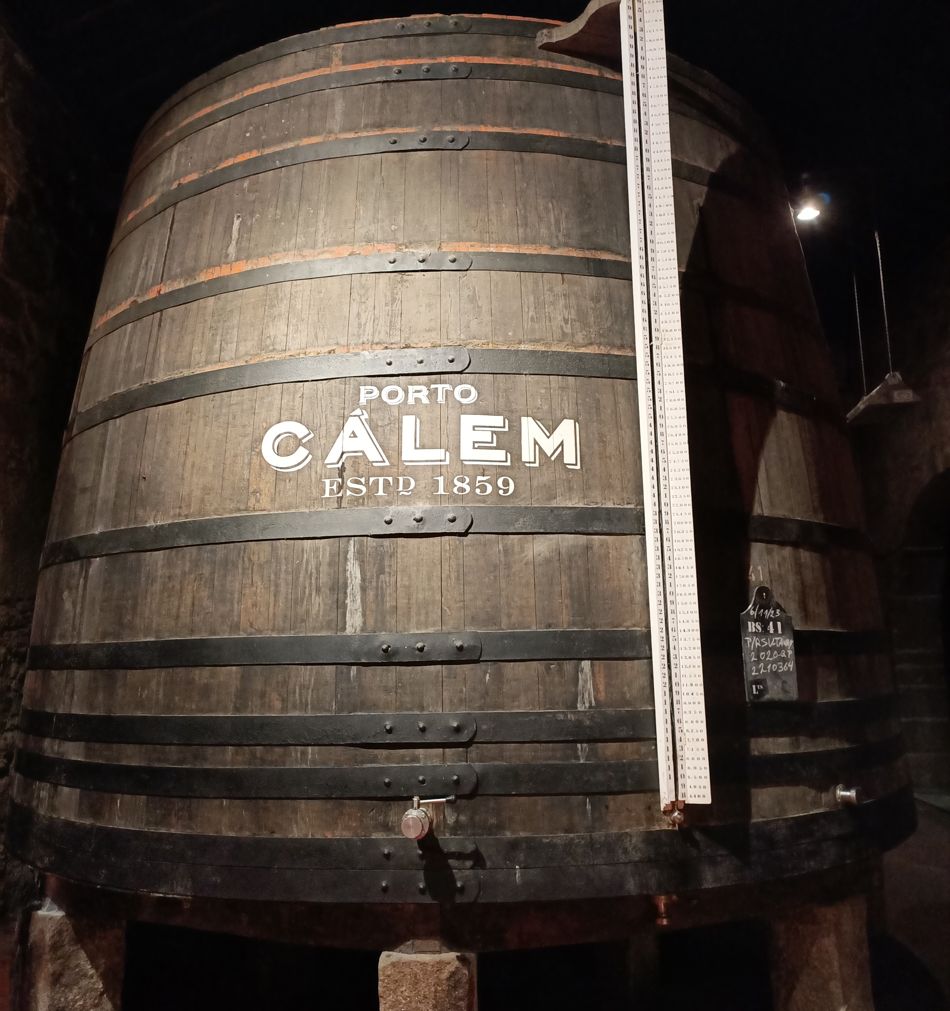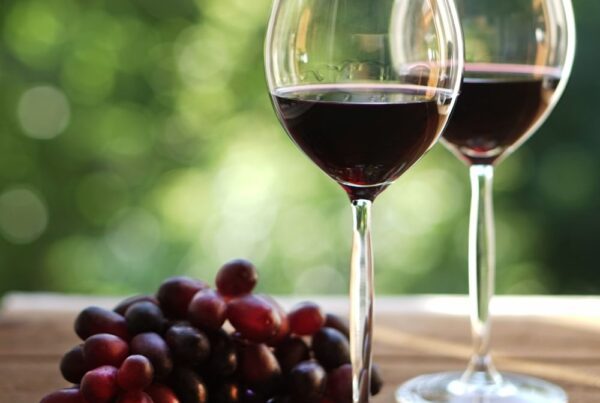Port and Sherry are both delicious fortified wines.
They have many similarities, but they are also both unique wines that come in a variety of styles and flavors.
In this article, you will learn both the similarities and the key differences between Port and Sherry wine.
Quick answer: Both Port and Sherry are fortified wines with protected status – each can only be made according to strict rules and laws. They are made with different grapes and winemaking techniques. Each is made in a range of styles, colors and flavors.
Before we delve into the similarities and differences between Port and Sherry, let’s first establish briefly what they both are.

Contents
What is Port?
Port is a fortified wine made from a blend of black grapes varieties. The majority of Port is red, but a small amount of White Port is also made from white grape varieties.
Fortified wines are wines that have additional alcohol added.
A grape-derived spirit is added to partially fermented grape juice. The alcohol in the spirit kills off the yeasts and stops the fermentation. The result is a sweet, full-bodied wine that is high in alcohol.
There are different styles of Port that come in a variety of colors and flavors.
What is Sherry?
Sherry is a fortified wine, meaning a base wine that has a 95% abv neutral spirit added to it. This increases the alcohol content of the wine.
The fortified wine is then aged in the famous solera system. Sherry is made in a variety of styles from bone dry to very sweet.
Sherry wine must be made in Jerez, Spain and adhere to the Jerez DO standards (rules and regulations) in order to be labelled Sherry.

Similarities between Port and Sherry
There are a number of similarities between Port and Sherry:
- Both fortified wines: Port and Sherry are both fortified wines.
- Protected Status: Both Port and Sherry have Protected Designation of Origin (PDO) status. This means that there are rules and laws that say something can only come from a specific place. In this case, Port can only be made in the Duoro Region in Portugal and Sherry can only come from Jerez DO in Spain.
- Range of styles: Both Port and Sherry are made in a range of different styles depending on how they are made.
- Ready to drink: With the exception of Vintage Port and some LBV Ports, both Port and Sherry are made ready to drink and do not require or benefit from further ageing.
- Traditional winemaking methods: Both Port and Sherry have traditional and unique winemaking methods that make each special (see below).

Key differences between Port and Sherry
| Characteristic | Port | Sherry |
| Color | Ruby, tawny to brown; pink (rosé); straw, golden, amber (white) | Pale lemon, amber, brown depending on the style |
| Flavors | Varies depending on style | Varies depending on style |
| Sweetness | Sweet (White Ports sweetness levels vary) | Bone dry to very sweet, depending on the style |
| Alcohol percentage | Between 19-22% abv | Between 15-22% abv depending on the style |
| Ageing methods | Large oak casks (Ruby), bottle ageing (Vintage), oxidative ageing in pipas (Tawny) | Solera System – biological, oxidative, or both. |
| Ready to drink | Yes (Vintage benefits from ageing) | Yes |
| Grapes | Black grapes | White grapes |
| Soil | Schist bedrock | Albariza |
| Grape spirit | Up to 77% abv | 95% abv |
| PDO | Yes | Yes |
Port vs Sherry terroir
The soil and weather conditions influence the flavor of grapes and therefore the wine. Sherry and Port are grown in very different soil conditions.
Port vineyards are located on steep slopes. The schist bedrock permits grapes to grow in poor soil. The schist retains and distributes water that collects in the numerous fissures and seeps through to great depts, ensuring the vine roots develop downward.
The schist rock also absorbs heat from the sun during the day and release it at night, keeping the vines warm.
Sherry is grown in a completely different soil called albariza.
The albariza soil ensures that the vines can thrive despite the heat and low rainfall.
Albariza soil has a high chalk content which provides excellent drainage while at the same time, it can store enough water at depth to sustain the vines during hot weather.

Port vs Sherry grape varieties
Port and Sherry use very different grape varieties.
Port is made using a complex blend of several black grape varieties (except White Port which is made with white grapes).
There are approximately 30 different traditional grape varieties that Port wine can be made with. Many are thick-skinned grapes that give Port wine its deep color and structure.
Six of the most commonly used grapes in Port production are:
- Touriga Franca
- Touriga Nacional
- Tinta Barroca
- Tinta Roriz
- Tinto Cao
- Tinta Amarela
Each variety contributes its own distinctive character to the wine and thrive under specific growing conditions.
The combination of different varieties gives Port both complexity and harmony.
Sherry is made from Palomino, Pedro Ximénez and Moscatel/Muscat of Alexandria grapes (all white grapes).
Dry Sherry wines are primarily made from the Palomino grape and naturally sweet Sherries are made using sun-dried Pedro Ximénez and Moscatel/Muscat of Alexandria.
Palomino and Pedro Ximénez grapes are neutral-flavored grapes which makes them ideal for Sherry production where the flavors develop during the ageing process.

Different levels of fortification
Fortification of the base wine with grape spirit stops the fermentation process and increases the alcohol levels.
Port wine is fortified using a grape spirit that can be up to 77% abv.
Sherry wine is fortified with a grape spirit that is 95% abv.
Approximately 20% of Port wine is grape spirit which is significantly more than Sherry wine. The amount of grape spirit in a Fino Sherry, for example, is around 3.5%.
Different Fermentation/extraction techniques for Sherry and Port
Port has a short but intense fermentation period. Vigorous extraction techniques, such as foot treading, are used to extract as much color, flavor and tannins as possible in this short period of time.
Sherry is fermented and extracted in a manner typical for white wine, but at higher temperature than usual (22-26 °C) for white wine.
Port vs Sherry different Maturation/ageing methods
The ageing methods used in Port and Sherry are different and both have a strong influence over both the flavor and color of the wine.
Port wine is aged in two ways:
Ruby Port ageing
Ruby Ports are aged in large vats with minimal contact with wood and oxygen.
The wine is aged in the vats for different periods of time, depending on what type of Port the winemaker wants to create.
The flavors of Ruby Port develop and change as it ages. Young Ruby Port has primary fruit flavors such as red and black berries, as well as chocolate and spices like cinnamon.
Wines that have aged for longer develop tertiary flavors, such as cooked fruit, prune and leather notes.

Tawny Port ageing
Tawny Port is aged in small barrels, called “pipas” that are part-filled with wine. They pipas are approximately 5/6 full, ensuring the wine is in contact with oxygen.
It is this contact with the oxygen and wood that creates the oxidative notes in Tawny Port, as well as its color, which can range from Tawny (brownish) to brown color.
The longer a Tawny Port is aged, the darker and browner the color will be.
The smaller surface area of the pipas also ensures more contact with wood than in a large vat. This contact with the wood also influences and changes the flavors and color of the wine.
As Tawny Ports age the fruit flavors fade and transform into dried fruit flavors, such as raisins and prunes. Tawny Ports also have notes of walnut, chocolate, coffee and caramel.

Sherry is aged differently to Port wine.
Some Sherry is aged biologically, some oxidatively and some are aged both ways.
Biologically aged Sherry
Biologically aged Sherry, such as Fino, Manzanilla and Pale Cream, is aged under a thick layer of yeast called “flor”.
The yeast feeds off of the alcohol, other nutrients and oxygen in the barrel. The flor produces carbon dioxide and acetaldehyde. The acetaldehyde gives Sherry its distinctive flavor.
Oxidatively aged Sherry
Oloroso, Pedro Ximénez (PX) and Moscato are aged oxidatively. Amontillado and Palo Cortado are both aged oxidatively after biological ageing.
When the wine is fortified to 17%, the flor dies off. The contact with oxygen causes the wine to become deeper in color and to develop complex aromas and flavors (walnuts, toffee, coffee).
Solera system
Sherry is matured in the famous solera system.
It is a system where wines of various maturation levels are mixed together to maintain consistency and particular qualities in the wine. This involves blending wines from different vintages to create a particular style or flavor.
Butts (large oak barrels) are grouped together into levels that are known as “criaderas”. Each criadera contains wine of different average ages.
The number of levels in the system can vary, but the wines with the oldest average is the bottom level and the top level is wine that has come from the sobretabla (wines set aside for a period of time after classification).
When the wine in the criadera on the bottom level is ready for bottling, an equal amount of wine is taken from each butt. It is then blended together and bottled.
The bottom criadera is only ever partially emptied and the wine is replenished by drawing the same amount of wine from the criadera on the next level up.
The wine from each butt from this level is also blended together before replenishing the bottom criadera. The replenishment continues through each level until you get to the top level, which is replenished from the sobretabla.

Read with confidence: I am a certified wine expert (WSET L3).





